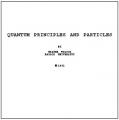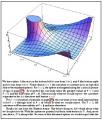
An Introduction to Spontaneous Symmetry Breaking
by Aron J. Beekman, et al.
Publisher: arXiv.org 2019
Number of pages: 149
Description:
In these lecture notes, starting from a careful definition of symmetry in physics, we introduce symmetry breaking and its consequences. Emphasis is placed on the physics of singular limits, showing the reality of symmetry breaking even in small-sized systems. Topics covered include Nambu-Goldstone modes, quantum corrections, phase transitions, topological defects and gauge fields. We provide many examples from both high energy and condensed matter physics. These notes are suitable for graduate students.
Download or read it online for free here:
Download link
(1.9MB, PDF)
Similar books
 Computer Tools in Particle Physics
Computer Tools in Particle Physicsby Avelino Vicente - arXiv
In this course we will learn how to use the computer tools -- such as SARAH, MicrOmegas, MadGraph, SPheno or FlavorKit -- to explore new physics models and get robust numerical predictions to probe them in current and future experiments.
(7438 views)
 Quantum Principles and Particles
Quantum Principles and Particlesby Walter Wilcox - Baylor University
This is an introductory text, it includes material which overlaps with particle physics, including a number of interesting models as well as material on identical particles. The ideas of quantum mechanics are introduced via Process Diagrams.
(13632 views)
 A Simple Introduction to Particle Physics
A Simple Introduction to Particle Physicsby M. Robinson, K. Bland, G. Cleaver, J. Dittmann, T. Ali - arXiv
An introduction to the relevant mathematical and physical ideas that form the foundation of Particle Physics, including Group Theory, Relativistic Quantum Mechanics, Quantum Field Theory and Interactions, Abelian and Non-Abelian Gauge Theory, etc.
(17237 views)
 Nuclear and Particle Physics
Nuclear and Particle Physicsby Niels Walet - UMIST
In these lecture notes the author shall discuss nuclear and particle physics on a somewhat phenomenological level. The mathematical sophistication shall be rather limited, with an emphasis on the physics and on symmetry aspects.
(15990 views)